EGYPTOLOGY: The Western Desert of Egypt and its Oases, Part #1
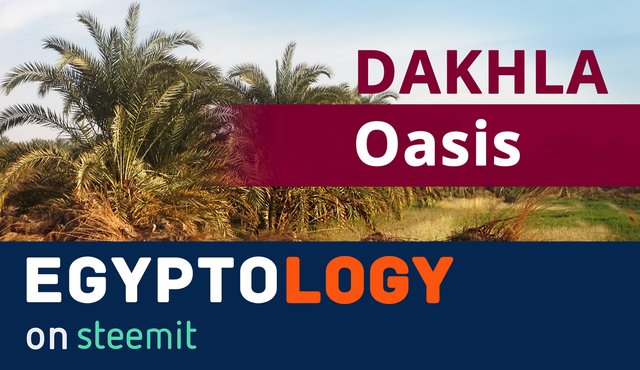
The oases in the western desert keep often a bit in the shadow of the glowing pyramids and King's Valley monuments when tourists come to Egypt. Most people don't even know that there are areas in Egypt beside the Nile deep within the desert that have a lot of highly interesting places connected with the Ancient Egyptian Civilisation. In this short series, I want to present you three of the most beautiful oases I currently visited: Dakhla, Kharga and Fayoum. Today I take you with me on my journey through Dakhla Oasis.
Dakhla Oasis
The Dakhla Oasis is located around 450 km south of Cairo and 400 km west of the Nile, in the so-called "New Valley" district (see map below).The Kharga-Dakhla Route over Assiut along the Nile is one way to get into that area, another one goes through the Sahara desert via Bahariya Oasis. The most convenient way is to travel by bus, which goes from Cairo Sayeda Zaynab Quarter two to three times per day and takes visitors to one of the most impressive natural habitats of this world in "only" around 12 hours. It's a very long journey, but the place is worth the effort.
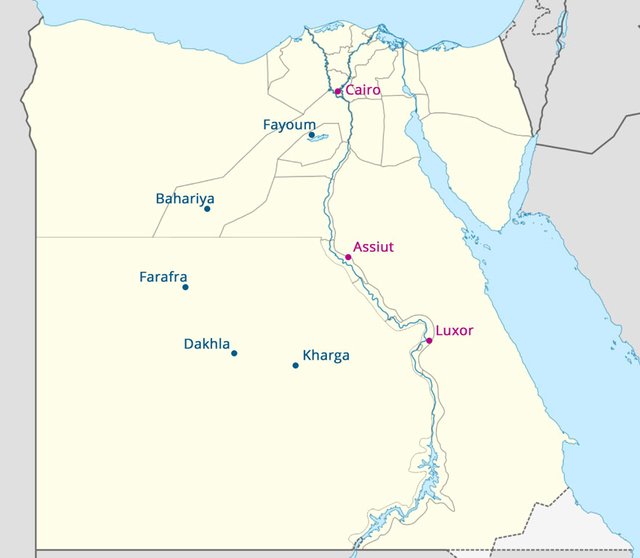
A Huge Village
When I talk to my friends about "my" most favorite oasis, they never imagined that this place is the home of nearly 150.000 inhabitants within an area of around 2000 km2. From the western perspective, an oasis is more like a tiny spot of a few hundred square meters, surrounded by palm trees. But Dakhla is comparably huge and it keeps growing. When you visit the capital named "Mut" one year from now, many sandy areas will have become building sites to solve the needs of living space for the expanding population. But the houses here are not so high like in Cairo, and then you will smell the air with a mix of dust, heat and agriculture. So, Dakhla is more a big village.

Too Far Away for Casual Tourists
Usually, not many foreign tourists come to Dakhla. A pity for them, I would say, because – beside the great famous monuments, Dakhla has its very unique charm and you feel directly calming down after the stressful bus ride from Cairo. Silence is something that is quite luxury in Egypt (and also in the rest of the modern world). So, when you are feeling down – come to the oasis. You literally find peace here. The people are not used to see foreigners every day. So you probably get greeted by almost everyone on the street. If you greet them back, make sure you have enough time, because in 9 out of 10 cases you will be invited to their house and have at least a tea or coffee with them. Hospitality and I mean honest, true hospitality without the aim of a financial advantage is rare in Egypt, but in Dakhla, it still exists. You can leave a place with a warm handshake and they will be thankful and feel honoured.
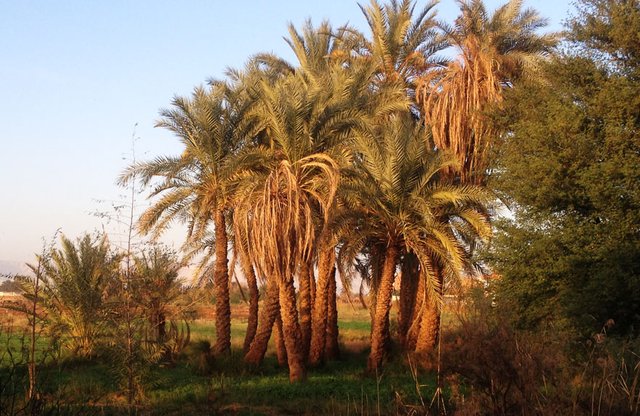
Elias Camp - Back to the Roots
If you need a nice resting place or want to stay one or more nights in this amazing oasis, I can highly recommend the hotel "Elias Camp" which is an "oasis in the oasis". The owner, Nasser, is a good friend of my family and speaks very good English, French and German. Surrounded by orange trees and gardens with organic vegetables that are used to prepare food on a self-sufficient basis I questioned my life I lived before. Life is easy here, comfortable and slow. The cats and dogs here have names and a shelter in this little "paradise", that even consist of two large swimming pools (see short video clip below). Tiny adobe houses with each one have an own bathroom will give you a shelter when the famous "hamzin" is coming – the annual heavy sandstorm.

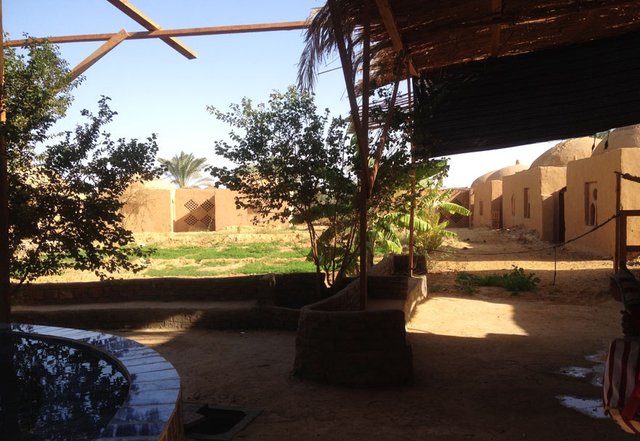
The Bedouins of Dakhla
Bedouins are the inhabitants of the Arab and Egyptian deserts and are traditionally organised in huge family clans ruled by one patriarch. The Arab Bedouins were the first who converted to Islam in the 7th century and spread this religion over north Africa and Spain.
This culture of nomadic people that continuously travel through the desert with tents and camels have their "resting place" in Dahkla. They have no written history and their spiritual heritage is fixed in myths and narratives.
Bedouins hold a strong codex of honour which consists of the love to other people and hospitality. Especially those "secret acts of kindness" as we would say, supporting acts that only the supporter know of, are real acts of charity.
Up until the 19th century, the Bedouins controlled most of the Egyptian desert. The Dakhla Bedouins are one of four still existing clans of Bedouins (beside the Sinai Bedouins, the Bedouins from the red sea and the Bedouins from the north coast).
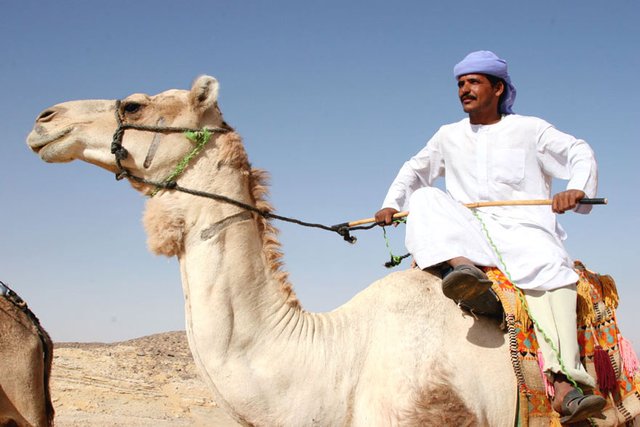
Scientific Exploration in History
As you might know, I am an Egyptologist. So my primary intention is not the comfort of a nice vacation (although I enjoy combining both at the same time), but I came here in the first place to continue my scientific research on lions (statues, images) of the Greco-Roman and Meroitic times in Ancient Egypt regarding the Western Desert. I will write an extra article about that subject in detail to not extend this post to a TL;DR. ;)
But for now, I want to give you a short introduction to the history of Egyptology in Dakhla Oasis which is quite interesting, since not only tourists are very rare here – also not many scientists found their way to this most remote place in Egypt.
Rohlf's Expedition
Dakhla was inhabited from the earliest times of the Ancient Egyptian culture. Back to the 5th dynasty, we can find a huge amount of artefacts that show us a flourishing society in this fertile spot. But most findings were made from the Greco-Roman period, such as the Dayr El-Haggar Temple and the Tombs of El-Mozawaka. I visited these sites yesterday, so I will give you an exclusive report about these highly interesting archaeological monuments in the next posts.
The first known semi-scientific attempt to explore the Libyan desert and the area around Dakhla was the so-called Rohlf's Expedition. The team around the German Gerhard Rohlfs came here in 1873/1874 with a camel caravan and they discovered first the remains of the Dayr el Haggar Temple. They left a graffiti mark on one of the columns as a sign of their presence. Something that is absolutely impossible today, was a common habit in the early beginning of Egyptology. Now those inscriptions became a historical event on its own and are mentioned in the travel guides.
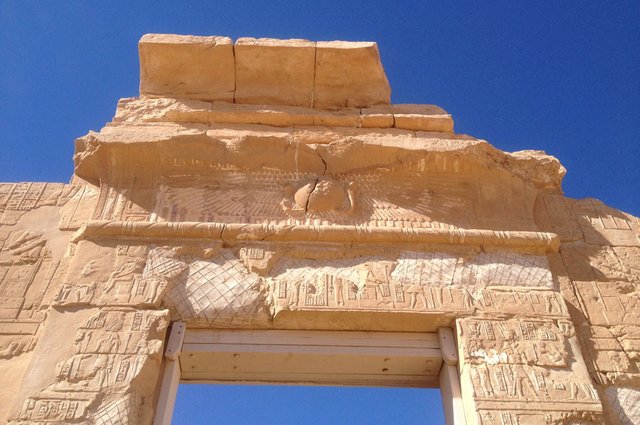

Ongoing Contemporary Missions in Dakhla
The Dakhleh Oasis Project (DOP) is one of the current missions right now in Dakhla with several projects covering a wide range of research interests. It is a long-term project focussing on restoration works, paleographic, and archaeological surveys but they are also interested in educating the local youth. The DOP provided lectures in the past for oasis history and archaeology and environments.
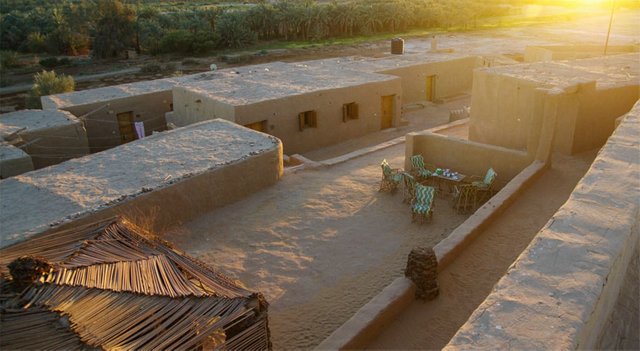
Stay tuned for the upcoming article about Dayr El-Haggar Temple!
Sources:
• Ägypten, Wüsten und Oasen, Travel Guide, edited by DDB Travel & Tourism Paris, 2006.
• Rohlfs, G., "Drei Monate in der Libyschen Wüste", Kassel 1875.
• Kaper, Olaf E., Archäologische Forschungen der Rohlfs’schen Expedition in der Oase Dachla (1874). In: Arnst, Caris-Beatrice, Hafemann, Ingelore, Lohwasser, Angelika (Eds.): Begegnungen. Antike Kulturen im Niltal. Festgabe für Erika Endesfelder, Karl-Heinz Priese, Walter Friedrich Reineke und Steffen Wenig. Leipzig 2001.
• http://artsonline.monash.edu.au/ancient-cultures/excavations-in-dakhleh-oasis-egypt/
• http://dakhlehoasisproject.com
• https://de.wikipedia.org/wiki/Dachla
• http://www.eliascamp.com
Images:
• Pict. 2, 3, 4, 5, 6, and 8: My own photographs, taken 1-1-18.
• Pict. 1: (edited by the author): Source CC BY-SA 3.0
• Pict. 6: Source
• Pict. 9: Source
Feel free to ask all the question of what you always wanted to know about Ancient Egypt. That’s my job and my passion. Let’s discuss your thoughts and ideas.

If you liked this article, please follow me on my blog @laylahsophia. I am a German Egyptologist writing about ancient and contemporary Egypt, history of science, philosophy and life.
Your curiosity and the way you share is the oasis itself. I'm intersted in egyptian paleography, i hope someday you can write it down. Thank you, hopefully can visit there.
You are warmly welcome! :)
I can see laylah you are working hard, in the desert it must be a beautful site to see water!!! like a oasis! : )
Thank you, this is so refreshing! I am full of romantic thoughts about oasis and you were right in estimating that most people think of them as tiny spots in the middle of nowhere. The appreciated silence I really would like to experience as well as to be hosted by the locals. Sometimes I so much long for authentic inviting people! And of course I get it, don't get me wrong.
The early Egyptologists must have thought of themselves to crack the jackpot, I guess! The marks I must investigate further in enlarging the picture. What did they write? "Hello, it's us?" Pardon me not being serious.
Have a great time as you sure will have and delight us with your upcoming posts!
Thank you!!
Thank you, @erh.germany.
I don't know what they were writing on that columns since they are too high to read (the blocks were on the ground, when they found it once and now they are piled up, probably 8 meters high). Maybe they wrote something like "Gerhard war hier"... or "Heinrich <3 Dakhleh" 😆
Thank you too, Erika. :)
That's funny!!! :-D
well, I guess you won't climb up the ladder and check that out?
You are always welcome, my friend!
as an Egyptiani'm feeling so happy to see that
great work
Thank you very much! I appreciate it. :)
Well done! This post has received a 100.00 % upvote from @litasio thanks to: @steemstem-bot. Whoop!
If you would like to delegate to the @LitasIO you can do so by clicking on the following links: 50SP, 100SP, 250SP, 500SP. Be sure to leave at least 50SP undelegated on your account.
This post has received a 0.28 % upvote from @drotto thanks to: @steemstem-bot.